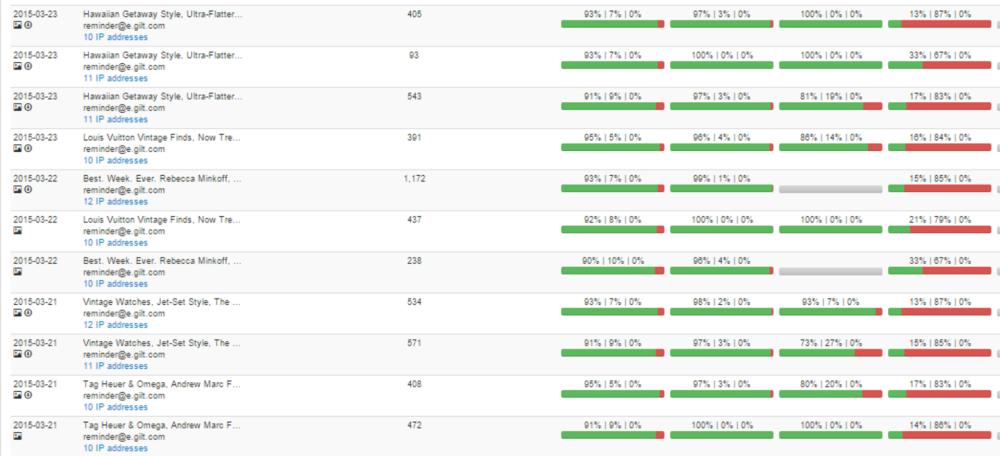GILT was affected by the block. The four ISPs being monitored are Gmail, Yahoo!, Outlook, and AOL (in red).
In a case of spam filtering running amok, AOL more or less shut down access for more than 1,000 commercial emailers for three days in late March.
Beginning March 21, the gaffe affected a large number of commercial senders—including Chase, GAP, Netflix, Walmart, and Target—who had 70 to 85% of their emails sent to the spam folder.
The root cause, according to eDataSource’s Arthur Sweetser, is that AOL released new code that contained a glitch. He was surprised, he adds, that upwards of 90% of brands were completely oblivious to the block.
“Now, it’s nothing new that ISPs release new code or anti-spam measures that go a bit too far. After all, an overwhelming majority of the email they get to sort through is spam or malicious emails,” says Sweetser, CMO of the email, social, and eCommerce solutions provider. “Their job is not an easy one. What was truly eye-opening to me is that most of these blue-chip companies didn’t realize what was going on. Their seed-based monitoring didn’t alert them.”
Companies that rely on seed-based monitoring as their first defense, Sweetser says, were tricked into thinking that everything was running smoothly— thanks to false negative signaling or panicking. In fact, many thought that they were being shut out of AOL due to a mistake on their end. As a result, many tried to resend or pause campaigns to thwart the issue.
“Although AOL is by no means the mainstay it used to be,” Sweetser says, “most B2C lists still have between 8 and 12 percent of their file going to AOL-based addresses, which means it still hurts—a lot.”








